Mike and Mary Jane like history and so do Ted and I, so we had an “historic” day together. We met for lunch at Blueberry Hill, a St. Louis landmark restaurant and music club that opened in 1972.
Blueberry Hill has rooms for eating, for parties, and for weekly live musical performances. One of the rooms is named the Elvis Room; another is named the Duck Room in honor of Chuck Berry’s duck walk. Chuck Berry, the first person inducted into the Rock & Roll Hall of Fame, inaugurated the Duck Room and played 209 consecutive monthly concerts there–doing his duck walk, of course. Many famous musicians have played at Blueberry Hill, and the walls have hundreds of framed pictures of the owner with each of them, as well as with four U.S. presidents.
The owner of Blueberry Hill started collecting things as a child and displays his collections in (again) hundreds of showcases throughout the building. His collections feature every kind of pop culture memorabilia imaginable, including Howdy Doody, the Simpsons, Chuck Berry, Star Wars, jukeboxes, lunch boxes, toys, and more.
Today, the four of us came to Blueberry Hill for lunch. We plan to come back on another day to explore the restaurant’s museum-like rooms and displays. You can’t always get a level photo with a selfie, but Mike managed to fit all of us in his picture.

These are the walls in one of the restaurant’s rooms.
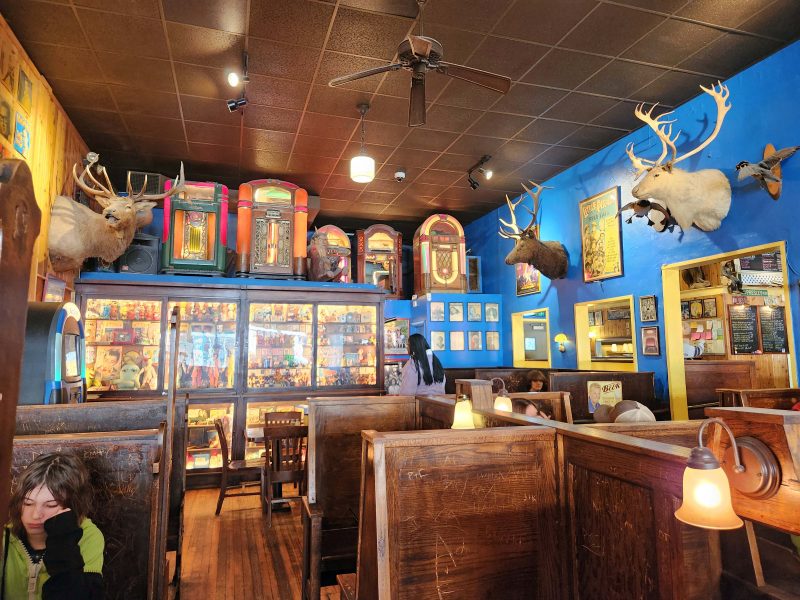
Here’s a wall in the room where we were seated. In case you missed it, I added an arrow to the picture of Elvis for your convenience. 🙂
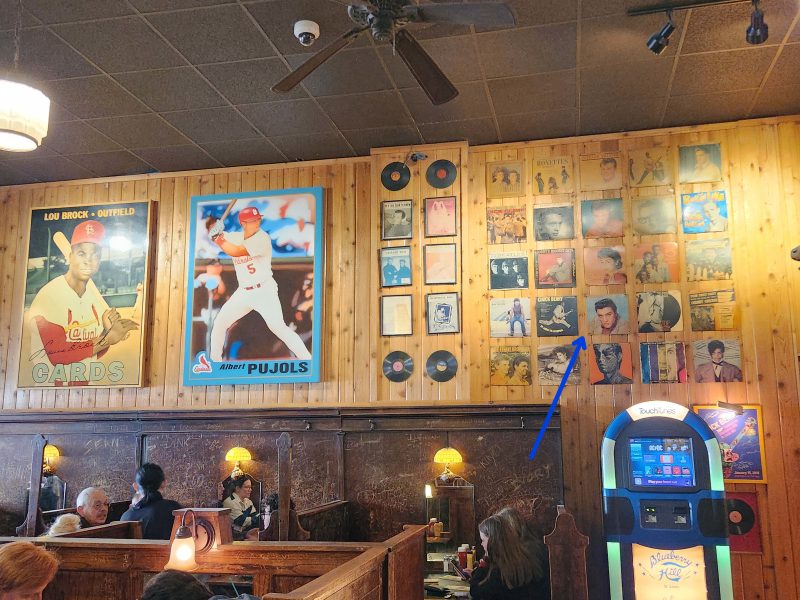
The St. Louis Walk of Fame honors people from the St. Louis area who were either born here or who spent their formative or creative years here. The more than 170 honorees are from all walks of life and areas of achievement and have made major contributions to the city’s cultural heritage. The Walk of Fame sidewalk passes Blueberry Hill, so we saw some of the stars as we entered and left the restaurant. Below are stars for Chuck Berry (musician), Bob Costas (sportscaster), and Stan Musial (baseball player).

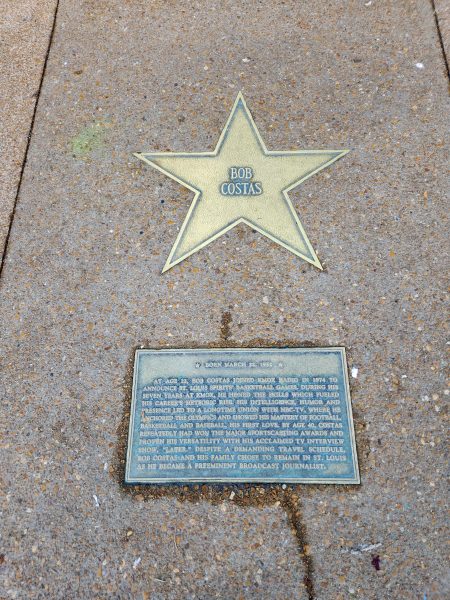

Our primary destination today was the Missouri History Museum, housed in the original 1913 Jefferson Memorial building. The memorial was constructed with proceeds from the 1904 St. Louis World’s Fair and stands at what was the main entrance to the fair. This was the first national monument to Jefferson. (Why would St. Louis build the first monument to Jefferson? Think Louisiana Purchase.)
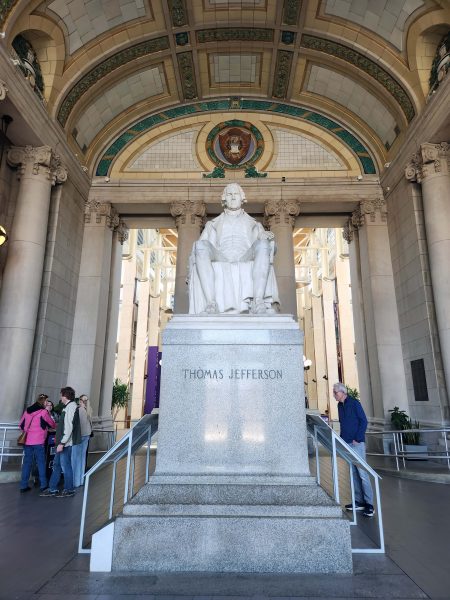
A replica of Charles Lindbergh’s Spirit of St. Louis airplane hangs over the atrium area. The original airplane is housed in the Smithsonian National Air and Space Museum in Washington, D.C. and is one of that museum’s most popular attractions.
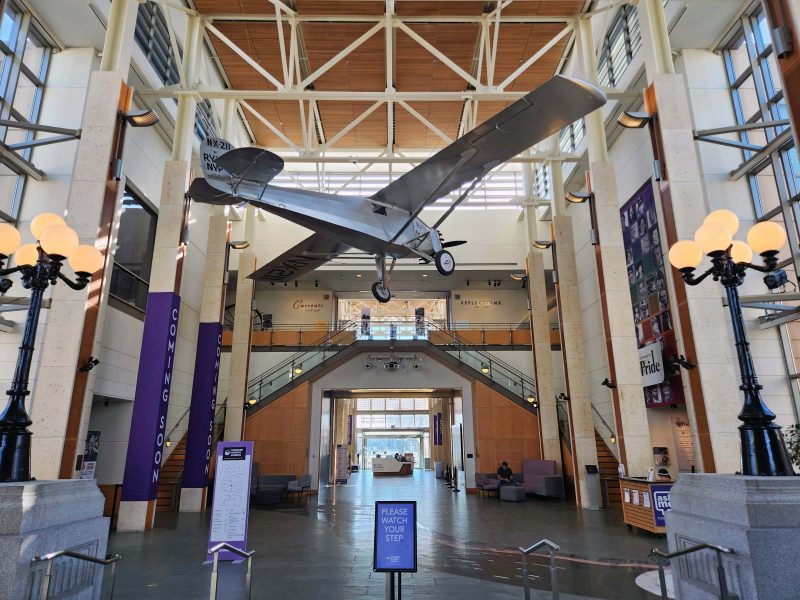
Our main interest at the museum today was the updated 1803 Louisiana Purchase Exposition, commonly referred to as the 1904 St. Louis World’s Fair exhibit. (The Exposition wasn’t finished in time for its scheduled 1903 opening.) The fair was held from April 30-December 1, 1904. The model of the fairgrounds in the photo below is built on a 1:400 scale. The fairgrounds covered 1,200 acres of the present-day 1,300-acre area of Forest Park, with the Palace of Agriculture alone covering approximately 20 acres. The fair featured over 1,500 buildings connected by 75 miles of roads and walkways. Over 19 million people attended the event.
Many of the fair exhibits focused on themes of racism and imperialism. This 2024 update of the museum’s exhibit includes information about those themes, rather than “sweeping them under the rug” and focusing only on the entertainment, new consumer goods, and architecture featured at the fair.
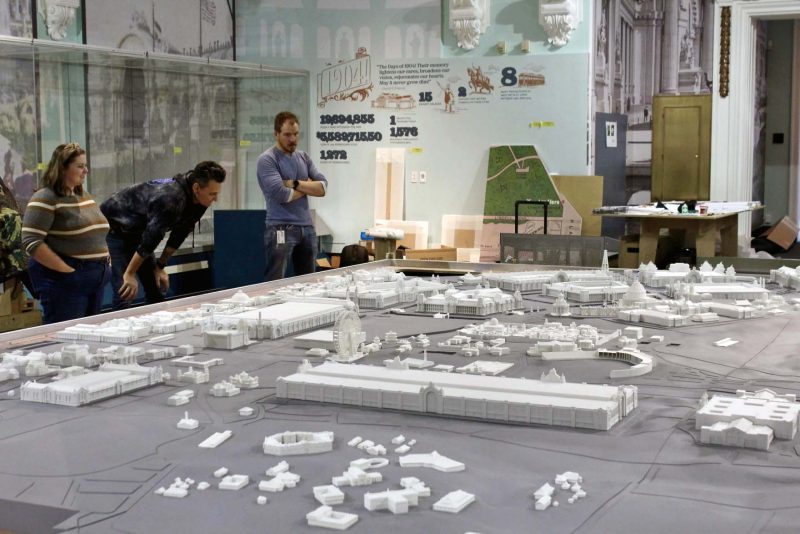
Here are some statistics about the 1904 World’s Fair.
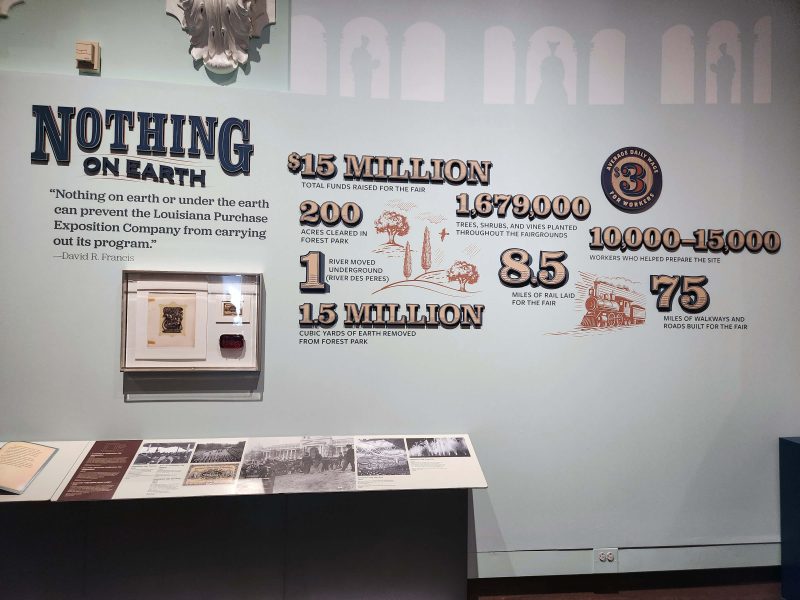
There have been many claims that the ice cream cone was invented at the 1904 World’s Fair, but that’s not true. Several places claim that invention in the late 1800s, but the 1904 World’s Fair greatly contributed to the popularity of the ice cream cone.
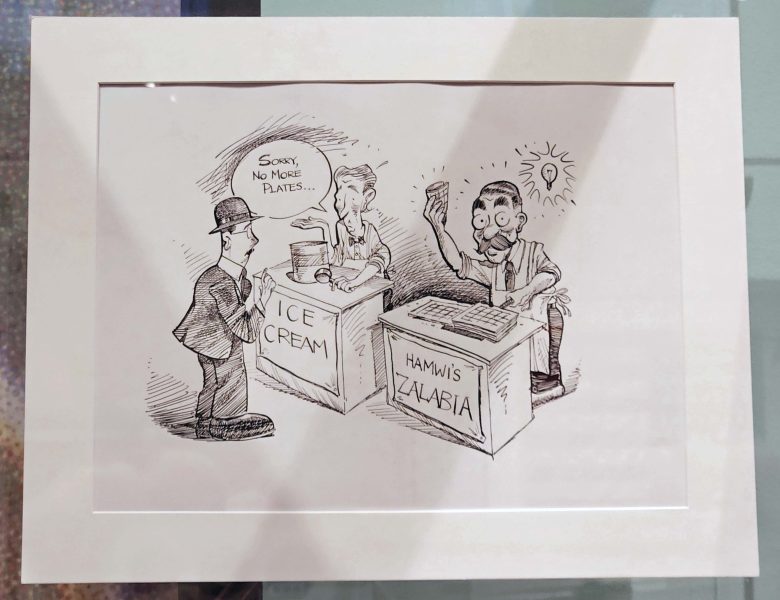
Ted and I saw a wall like this in North Dakota. Just as in North Dakota, these stories and comments were fun to read.
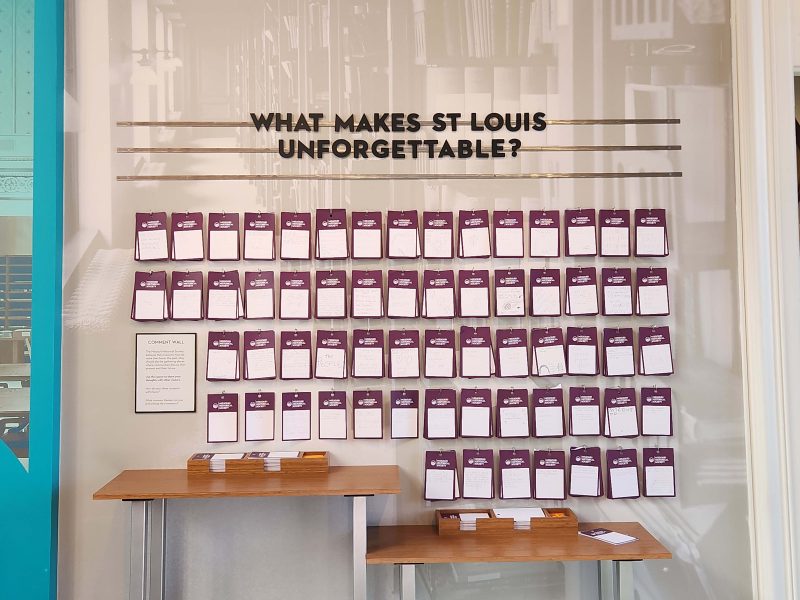
So what makes St. Louis unforgettable? Read on to discover four writers’ opinions.
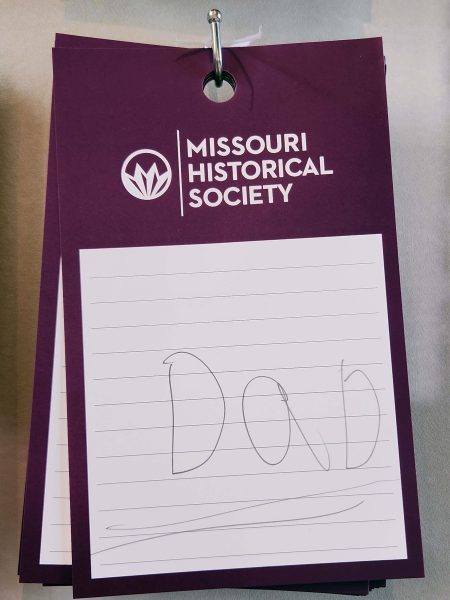
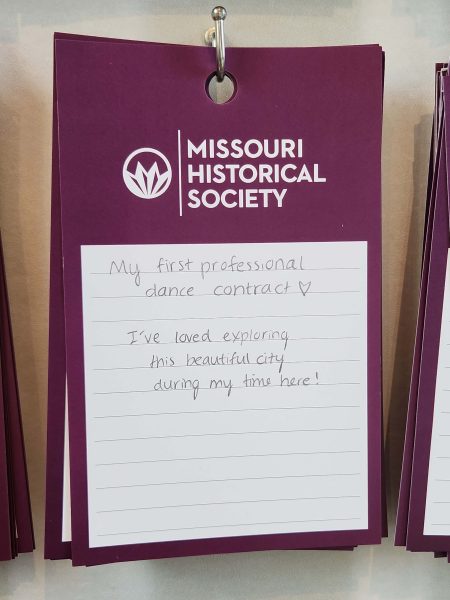
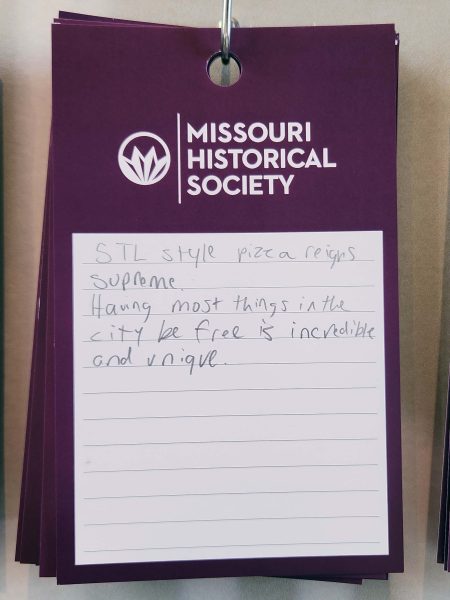
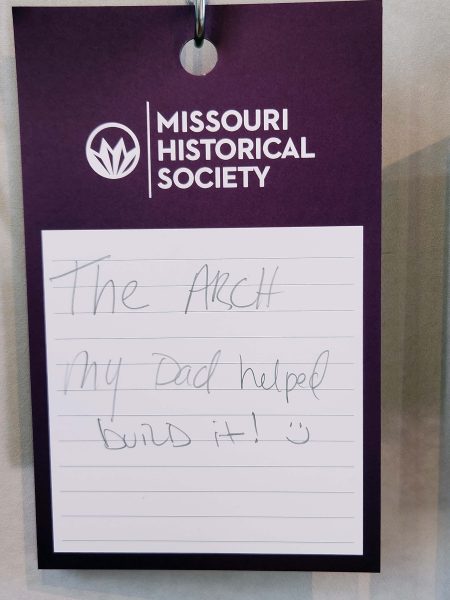
History can be fun. We all had a great time enjoying Blueberry Hill, a bit of the St. Louis Walk of Fame, and the Missouri History Museum.